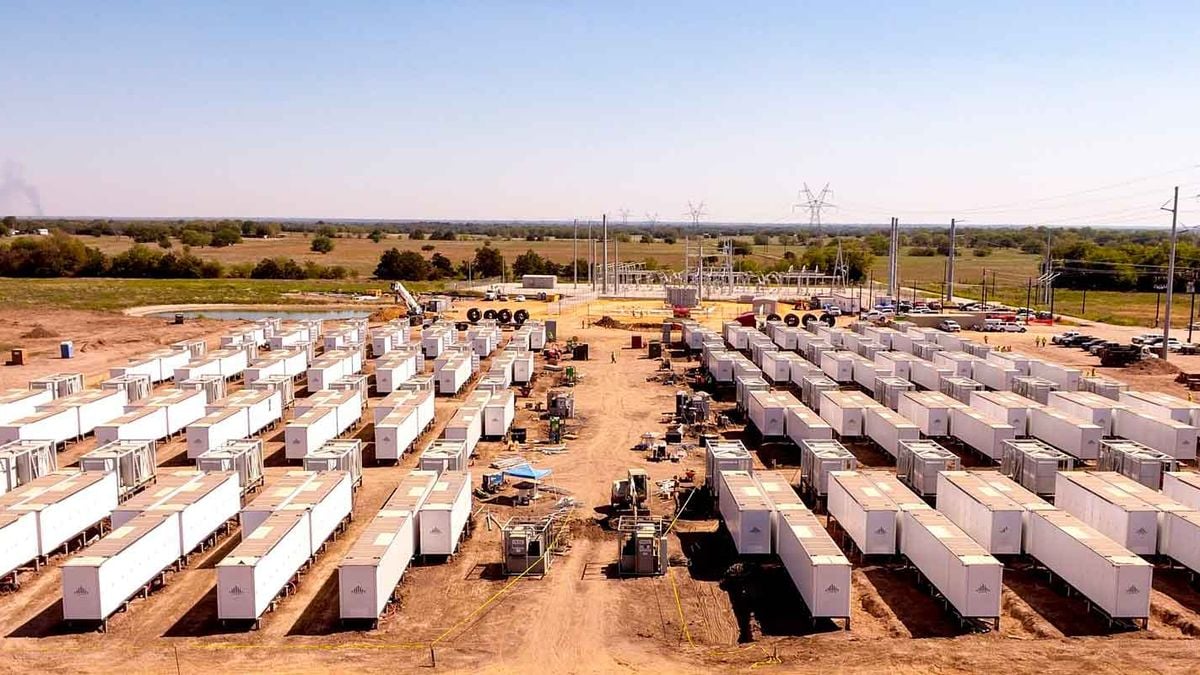 The 190MW/380MWh Cunningham facility being commissioned next year will be the largest operating battery energy storage project on the Texas grid. Courtesy of Acciona Energia
The 190MW/380MWh Cunningham facility being commissioned next year will be the largest operating battery energy storage project on the Texas grid. Courtesy of Acciona EnergiaGabe Murtaugh, storage sector manager at CAISO, said Feb. 15 at a panel discussion at the the Intersolar North America and Energy Storage North America conference in Long Beach, California, that stakeholders in California are considering rules for storage and transmission assets, or SATA.
“And I think where we’ve kind of come up with the most headwinds are how do you pay for these things?” he said.
On certain days the ISO will need resources not immediately discharged. Revenue will not be available, but utilities are “providing this essential service to the grid,” he said, raising questions about compensation.
“Does the ISO need to pay for that? Does the utility need to pay for that? Do we need to split this up somehow?” he said.
California is among the world’s largest energy storage markets.
Revenue streams for storage typically include those available to traditional generation resources, such as energy and resource adequacy payments, and transmission is typically rate-based.
The Federal Energy Regulatory Commission has separated generation and transmission and Justin Boose, renewable energy partner at the law firm of Holland & Knight, said one solution would be to treat a storage resource as a transmission asset and rate-base it to get a return.
But that strategy “leaves value on the table” because the resource also can serve as a generation asset, he said. And “structural impediments” bar transmission owners from operating in a merchant function, Boose said, citing anti-competition policies.
About 500 MW of lithium-ion battery storage on CAISO’s grid two years ago have increased to more than 5,200 MW of storage now available for dispatch in the market. It’s projected to rise to more than 6,000 MW later this year, Murtaugh said. The state is the target of more than 10,000 MW of storage on the grid by summer 2024, he said.
Storage as a transmission asset is seen as providing savings for consumers and limiting impacts on land resources and the environment. Storage resources generate electricity when the system most needs it, such as times when solar and wind power are not available.
The Midcontinent Independent System Operator said in September that storage resources are eligible to participate in energy and operating reserve markets. And ISO-New England asked FERC in December to allow a rule change establishing storage as a transmission-only asset.
In a December 2021 blog post, Murtaugh said compensation for storage resources when the grid operator may need the resources to hold state of charge is not set up in energy markets because market rules are geared for more traditional sources of power, such as natural gas, solar, wind and other renewables.
“This is quite different from traditional markets, where price formation is usually only based on current market supply and demand conditions,” he said.